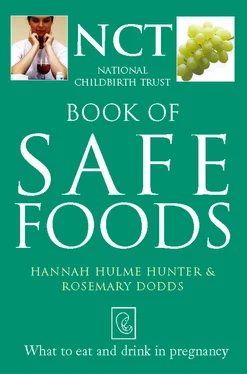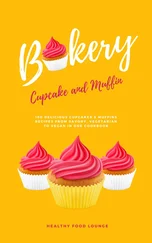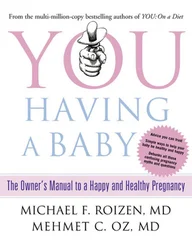Eat a variety of leafy green vegetables. (Spinach contains plenty of iron but this iron is not well absorbed by our bodies – so try other vegetables as well.)
 Eat meat or fish with non-meat iron foods. This will help you absorb as much iron as possible from the non-meat food – for example, minced beef eaten with leafy green vegetables.
Eat meat or fish with non-meat iron foods. This will help you absorb as much iron as possible from the non-meat food – for example, minced beef eaten with leafy green vegetables.
Drink tea and coffee between meals – rather than with your food. Both drinks contain chemicals that can reduce the amount of iron that your body can absorb from food. If you drink tea, have a cup an hour before your meal – or two hours afterwards.
 Certain foods reduce the amount of iron that our bodies can absorb from a meal. One example is rhubarb!
Certain foods reduce the amount of iron that our bodies can absorb from a meal. One example is rhubarb!
Most of us eat more salt than we need. Processed foods – such as ham, cheese, bread, baked beans and biscuits – all contain lots of salt. Savoury spreads (like yeast extract and beef extract), crisps, olives and salted nuts are obviously salty foods. In the long term, too much salt in your diet may contribute to high blood pressure and related health problems later in your life.
During pregnancy, however, the situation is more complicated. Restricting your salt intake at this time has not been shown to reduce the risk of high blood pressure during pregnancy. But this does not mean that you should add extra salt to your food. Use salt to flavour your food, as you would normally.
When you have had your baby, you can try reducing the amount of salt you use in cooking and on your food. This will help when your baby starts taking solid food, since babies should not have any salt at all added to their food.
There is no proof that cutting your salt intake during pregnancy will reduce swollen ankles. Similarly, there is no proof that leg cramps during pregnancy are caused by a lack of salt or of any other minerals.
Understanding food labels
What are calories?
A calorie (cal or kcal, for short) is a measure of how much energy a particular food gives us. Calories are sometimes called ‘kilocalories’. They mean the same thing. A ‘kilojoule’ (kJ) is another measure of food energy. One calorie is equal to about 4 kilojoules.
RDA stands for ‘recommended daily amount’. The recommended daily amount of a certain nutrient is the amount that most of us need to keep healthy. RDAs vary from person to person. For example, children’s nutritional needs are different from those of older people, and pregnant women’s nutritional needs are different from those of men, or women who are not pregnant. Very active people need more energy than people who don’t exercise much. The RDAs given on food labels usually refer to adult men.
Food labels usually list the RDAs of vitamins and minerals. The percentage figure given after each nutrient tells us how much of our RDA would be met by a portion of that particular food. For example, ‘Folic acid 34mg (17%)’ means that the food would give us 34mg of folic acid – or 17% of the daily requirement. This sounds very good – but remember that the RDA used is that of an adult man, rather than a pregnant woman whose need is much greater.
Next time you pick up an item of packaged food – a loaf of bread or a tin of baked beans, maybe – take a look at the panel of ‘Nutritional Information’ on the label. This information can be very useful when planning a balanced diet – especially when deciding whether or not to include a new food.
In Chapter 1 we used ‘servings’ to describe how much of each food group we need. We did not include weights because we feel that most women prefer not to spend their time weighing food and calculating the nutritional content of each item. Sometimes, however, it is useful to know just what a new food would contribute to your diet.
Imagine, for example, that you are trying to choose between two brands of breakfast cereal. The short list below suggests how much of each food group we need, in grams (usually written simply as ‘g’). With these figures in mind, you can look at the amounts written on the Nutritional Information of the two cereals and see what proportion of that need would be met by an average portion of each one.
Each day during pregnancy the average woman needs:
 about 51g protein
about 51g protein
about 18g fibre
 as little sugar as possible – ideally no more than 50g
as little sugar as possible – ideally no more than 50g
 as little saturated fat as possible – certainly no more than 23g
as little saturated fat as possible – certainly no more than 23g
no more than 53g of other fats
 about 15mg (milligrams) of iron
about 15mg (milligrams) of iron
 about 2,000kcal of energy – or 8,100kJ (with an additional 200kcal during the last three months).
about 2,000kcal of energy – or 8,100kJ (with an additional 200kcal during the last three months).
But things are not always as they appear! Sometimes interpreting food labels needs a bit of detective work.

 Folic acid is very important, especially during early pregnancy. Take a 0.4mg supplement each day, and eat more foods rich in folic acid (leafy vegetables, tinned baked beans, fortified breakfast cereals).
Folic acid is very important, especially during early pregnancy. Take a 0.4mg supplement each day, and eat more foods rich in folic acid (leafy vegetables, tinned baked beans, fortified breakfast cereals).
Women who eat a vegan, or near vegan, diet generally need a vitamin B 12supplement. Other women will get enough vitamin B 12from a balanced and varied diet.
 A balanced diet will provide all the vitamin A you need. Do not take a supplement.
A balanced diet will provide all the vitamin A you need. Do not take a supplement.
 Try to eat some foods rich in vitamin C every day. A good intake of vitamin C is needed to fight infection and disease, and boost the absorption of iron from food. Remember that vitamin C is easily destroyed by cooking.
Try to eat some foods rich in vitamin C every day. A good intake of vitamin C is needed to fight infection and disease, and boost the absorption of iron from food. Remember that vitamin C is easily destroyed by cooking.
Women who do not eat milk-based foods, or who do not spend much time out of doors may need a supplement of vitamin D.
It is better to prevent anaemia by eating more iron-rich foods (meat, fortified breakfast cereals, beans, leafy vegetables) than to take an iron supplement.
Pregnancy is a time to enjoy a rich variety of foods. It is also a time to take care of yourself and your growing baby by keeping in mind a few basic guidelines on food choice and preparation.
In this chapter we talk about the foods that may cause problems for you and your baby during pregnancy, and suggest ways in which you can avoid these problems.
‘Why do I have to be so careful?’
Читать дальше

 Eat meat or fish with non-meat iron foods. This will help you absorb as much iron as possible from the non-meat food – for example, minced beef eaten with leafy green vegetables.
Eat meat or fish with non-meat iron foods. This will help you absorb as much iron as possible from the non-meat food – for example, minced beef eaten with leafy green vegetables.











